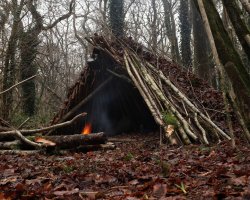Back in the mid 70’s serving in the army, whilst on a route exercise, on Otterburn training area, minus 5 during the day! One of our four man team started to behave really weird, onset hyperthermia. Decision,
come off the hill side, after about an hour and a half, things were getting worse, we found a sheep pen, one army sleeping bag between us, for emergencies, the army had our care at heart! Plus a huge heavy gauge plastic bag and army ponchos each. We stuck him in the bag and took turns getting in with him, all inside this big plastic bag. The other two wrapped in ponchos, that’s were we spent the night, it was cold! We survived, used all our hexi’s making brews and soups, got back to the check point 8 hours late. Got a bollocking for that and a pat on the back for doing the right thing. Mind you at 17, you can take on the world, ha ha!
would I like to repeat it, a big fat, NO!



